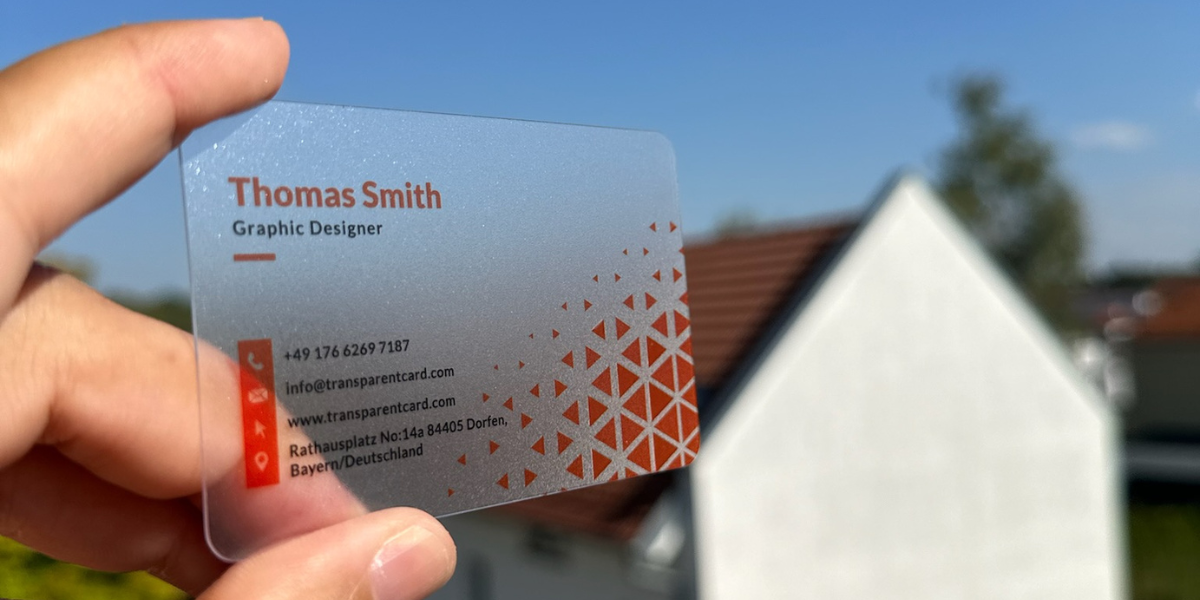In today’s environmentally-conscious world, businesses are increasingly adopting sustainable practices in all aspects of their operations. Business cards, a vital marketing tool, are no exception. By embracing eco-friendly materials, designs, and printing techniques, companies can showcase their commitment to the planet while leaving a lasting impression. This guide explores innovative and sustainable ideas for business cards, blending creativity with environmental responsibility.
Why Choose Eco-Friendly Business Cards?
Switching to eco-friendly business cards offers several benefits:
- Environmental Impact: Using recycled or biodegradable materials reduces waste and conserves natural resources.
- Brand Image: A sustainable business card reflects your company’s values and resonates with eco-conscious clients.
- Cost-Effective Options: Many sustainable materials are affordable, providing an economical alternative to traditional options.
- Unique Appeal: Eco-friendly cards often stand out with their natural textures and creative designs.
Materials for Sustainable Business Cards
1. Recycled Paper
Recycled paper is one of the most popular materials for eco-friendly business cards. It is made from post-consumer waste and has a reduced environmental footprint.
- Features: Natural texture, customizable finishes.
- Design Tip: Opt for simple designs with earthy tones to highlight the recycled material.
- Printing Technique: Use soy or water-based inks for an additional eco-friendly touch.
Read More : Sector Specific Business Card Design Suggestions
2. Seed Paper
Seed paper is embedded with seeds that can sprout when planted. It offers a biodegradable and interactive experience for your clients.
- Features: Plant-based, biodegradable, and interactive.
- Design Tip: Minimal text and designs ensure the seeds are not damaged during printing.
- Applications: Ideal for eco-conscious brands in gardening, wellness, or environmental advocacy.
3. Cork
Cork is a natural, renewable resource that is lightweight, durable, and visually appealing.
- Features: Unique texture, biodegradable, and water-resistant.
- Design Tip: Use laser engraving to preserve the integrity of the cork material.
- Applications: Perfect for creative industries like interior design or artisanal crafts.
4. Bamboo
Bamboo is a fast-growing, sustainable material known for its durability and sleek finish.
- Features: Strong, renewable, and elegant.
- Design Tip: Keep designs minimal to emphasize the natural grain of bamboo.
- Applications: Suitable for high-end brands and industries like hospitality or wellness.
5. Upcycled Materials
Repurposing materials like old packaging, denim, or coffee grounds for business cards gives new life to waste products.
- Features: Highly customizable, one-of-a-kind textures.
- Design Tip: Highlight the upcycling story in your design to emphasize sustainability.
- Applications: Great for brands focused on innovation and sustainability.
Eco-Friendly Printing Techniques
Choosing the right printing method is as important as selecting sustainable materials. Here are some environmentally-friendly printing options:
1. Soy-Based Inks
Soy-based inks are made from natural soybean oil, making them less harmful to the environment than petroleum-based inks.
- Benefits: Vibrant colors, low VOC (Volatile Organic Compound) emissions.
- Applications: Suitable for all types of paper materials.
2. Digital Printing
Digital printing produces less waste compared to traditional offset printing methods, as it doesn’t require plates or excess ink.
- Benefits: Cost-effective for small batches, less waste.
- Applications: Ideal for small businesses or freelancers.
3. Water-Based Inks
Water-based inks are non-toxic and biodegradable, making them a safer choice for the environment.
- Benefits: Eco-friendly, suitable for a variety of surfaces.
- Applications: Best for recycled and natural papers.
Sustainable Business Card Design Tips
Creating a sustainable business card involves thoughtful design choices that complement eco-friendly materials and printing methods.
1. Minimalist Designs
A minimalist approach not only saves resources but also creates a clean, professional look.
- Why It Works: Less ink usage reduces environmental impact.
- Examples: Focus on essential information, subtle logos, and simple color schemes.
2. Double-Sided Printing
Utilizing both sides of the card maximizes space and minimizes waste.
- Applications: One side for contact details, the other for a QR code or mission statement.
- Tip: Use QR codes to direct clients to digital portfolios or websites, reducing the need for additional printed materials.
3. Natural Colors
Earth tones like beige, green, and brown resonate with the eco-friendly theme.
- Why It Works: Complements natural materials like recycled paper or bamboo.
- Tip: Avoid fluorescent or overly bright colors, which require more ink.
4. Interactive Elements
Add value to your card by incorporating interactive features like planting instructions for seed paper or a detachable coupon.
- Why It Works: Encourages clients to keep and use your card.
- Applications: Perfect for eco-conscious retail or service industries.
Innovative Eco-Friendly Business Card Ideas
1. Plantable Business Cards
Seed paper cards that can be planted in soil are a great way to ensure your card lives on in a meaningful way.
- How It Works: The card biodegrades, leaving behind blooming flowers, herbs, or vegetables.
- Example Use Case: A florist or sustainable food brand can use this to create a lasting impression.
2. Wooden Business Cards
Thin sheets of wood, such as bamboo or birch, can be used to create durable, stylish cards.
- Unique Feature: Naturally elegant and biodegradable.
- Example Use Case: Luxury brands or eco-friendly architects.
3. QR Code-Only Cards
Replace traditional text-heavy cards with a QR code that directs users to a digital profile, reducing ink usage and waste.
- How It Works: Clients scan the code to access contact details, portfolios, or social media links.
- Example Use Case: Digital marketing agencies or tech startups.
4. Reusable Cards
Design business cards that can double as practical tools, like bookmarks or coasters.
- Why It’s Effective: Encourages clients to keep and use the card repeatedly.
- Example Use Case: Cafes or bookstores.
Challenges and Solutions for Sustainable Business Cards
- Cost Concerns
- Challenge: Some eco-friendly materials and printing methods may be more expensive.
- Solution: Print smaller batches or use mixed materials (e.g., combining recycled paper with soy ink).
- Durability
- Challenge: Biodegradable materials may not be as durable as traditional options.
- Solution: Use protective finishes or combine eco-friendly materials for added strength.
- Availability
- Challenge: Sustainable materials may not be readily available in all locations.
- Solution: Partner with specialized suppliers or explore digital alternatives like virtual business cards.
Conclusion
Eco-friendly business cards are more than a trend—they are a reflection of your brand’s commitment to sustainability. By choosing recycled materials, innovative designs, and green printing methods, you can reduce your environmental impact while creating a unique and memorable tool for your business. Whether you opt for seed paper, bamboo, or a minimalist QR code approach, your efforts will resonate with eco-conscious clients and set your brand apart in today’s competitive market. Sustainable business cards prove that a small change can make a big difference for both your business and the planet.












